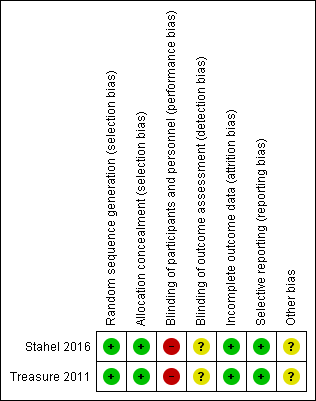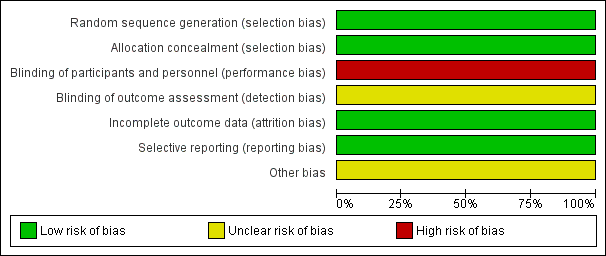Contenido relacionado
Revisiones y protocolos relacionados
Sarah Burdett, Jean Pierre Pignon, Jayne Tierney, Helene Tribodet, Lesley Stewart, Cecile Le Pechoux, Anne Aupérin, Thierry Le Chevalier, Richard J Stephens, Rodrigo Arriagada, Julian PT Higgins, David H Johnson, Jan Van Meerbeeck, Mahesh KB Parmar, Robert L Souhami, Bengt Bergman, Jean‐Yves Douillard, Ariane Dunant, Chiaki Endo, David Girling, Harubumi Kato, Steven M Keller, Hideki Kimura, Aija Knuuttila, Ken Kodama, Ritsuko Komaki, Mark G Kris, Thomas Lad, Tommaso Mineo, Steven Piantadosi, Rafael Rosell, Giorgio Scagliotti, Lesley K Seymour, Frances A Shepherd, Richard Sylvester, Hirohito Tada, Fumihiro Tanaka, Valter Torri, David Waller, Ying Liang, for the Non‐Small Cell Lung Cancer Collaborative Group | 2 marzo 2015
Noelle O'Rourke, Marta Roqué i Figuls, Nuria Farré Bernadó, Fergus Macbeth | 16 junio 2010
Isuru U Amarasena, Saion Chatterjee, Julia AE Walters, Richard Wood‐Baker, Kwun M Fong | 2 agosto 2015
Roberto Ferrara, Martina Imbimbo, Reem Malouf, Sophie Paget-Bailly, François Calais, Corynne Marchal, Virginie Westeel | 30 abril 2021
Non‐Small Cell Lung Cancer Collaborative Group | 12 mayo 2010
Ludovic Reveiz, José‐Ramón Rueda, Andrés Felipe Cardona | 13 junio 2012
Marta Pelayo Alvarez, Virginie Westeel, Marcela Cortés‐Jofré, Xavier Bonfill Cosp | 27 noviembre 2013
Hayley Barnes, Katharine See, Stephen Barnett, Renée Manser | 21 abril 2017
Quimioterapia para el cáncer de pulmón de células no pequeñas avanzado en pacientes de edad avanzada
Fábio N Santos, Tiago B de Castria, Marcelo RS Cruz, Rachel Riera | 20 octubre 2015
Renée Manser, Gavin Wright, David Hart, Graham Byrnes, Don Campbell, Zoe Wainer, Sera Tort | 24 enero 2005




